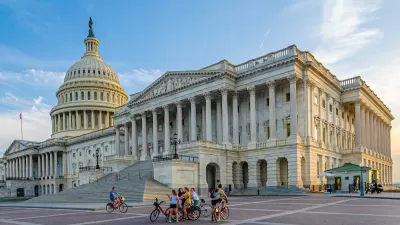Few transportation projects have transformed D.C. as thoroughly as Capital Bikeshare. From humble beginnings in 2010 with fewer than 50 stations, there are now over three hundred stations and 2500 bikes spread across the city.
For most of us, the bikesharing program is a fun way to get some exercise, a commute-shortener, or an excuse to get rid of our cars. And most of us don't give much more thought to it than that. Sure, we lobby for a new dock near our house or office, we wave at the hardworking bike rebalancers.
Delve a little deeper, though, and you realize that Capital Bikeshare is an incredibly complex system. Users take hundreds of thousands of trips per month (many more in the spring and summer--the system set new ridership records during the Cherry Blossom Festival). Bike docks empty out of neighborhoods like Columbia Heights in the mornings and fill downtown, and the pattern reverses in the evening. Placing new stations is more of an art than a science.
As the system heads toward its four-year anniversary, we thought we'd compile our favorite facts, thoughts and stories about the cheery red ubiquitous bikes. Don't call it a complete guide to bikeshare. Call it Elevation DC's take on answering the bikeshare questions you (should) think hardest about.
The post includes more information on how they place new stations, where the busiest are, the most hidden, secret Bikeshare station, and the most creative use of two CaBis ever.
FULL STORY: Everything you've always wanted to know about bikeshare (but were afraid to ask)

Alabama: Trump Terminates Settlements for Black Communities Harmed By Raw Sewage
Trump deemed the landmark civil rights agreement “illegal DEI and environmental justice policy.”

Planetizen Federal Action Tracker
A weekly monitor of how Trump’s orders and actions are impacting planners and planning in America.

The 120 Year Old Tiny Home Villages That Sheltered San Francisco’s Earthquake Refugees
More than a century ago, San Francisco mobilized to house thousands of residents displaced by the 1906 earthquake. Could their strategy offer a model for the present?

In Both Crashes and Crime, Public Transportation is Far Safer than Driving
Contrary to popular assumptions, public transportation has far lower crash and crime rates than automobile travel. For safer communities, improve and encourage transit travel.

Report: Zoning Reforms Should Complement Nashville’s Ambitious Transit Plan
Without reform, restrictive zoning codes will limit the impact of the city’s planned transit expansion and could exclude some of the residents who depend on transit the most.

Judge Orders Release of Frozen IRA, IIJA Funding
The decision is a victory for environmental groups who charged that freezing funds for critical infrastructure and disaster response programs caused “real and irreparable harm” to communities.
Urban Design for Planners 1: Software Tools
This six-course series explores essential urban design concepts using open source software and equips planners with the tools they need to participate fully in the urban design process.
Planning for Universal Design
Learn the tools for implementing Universal Design in planning regulations.
Clanton & Associates, Inc.
Jessamine County Fiscal Court
Institute for Housing and Urban Development Studies (IHS)
City of Grandview
Harvard GSD Executive Education
Toledo-Lucas County Plan Commissions
Salt Lake City
NYU Wagner Graduate School of Public Service





























